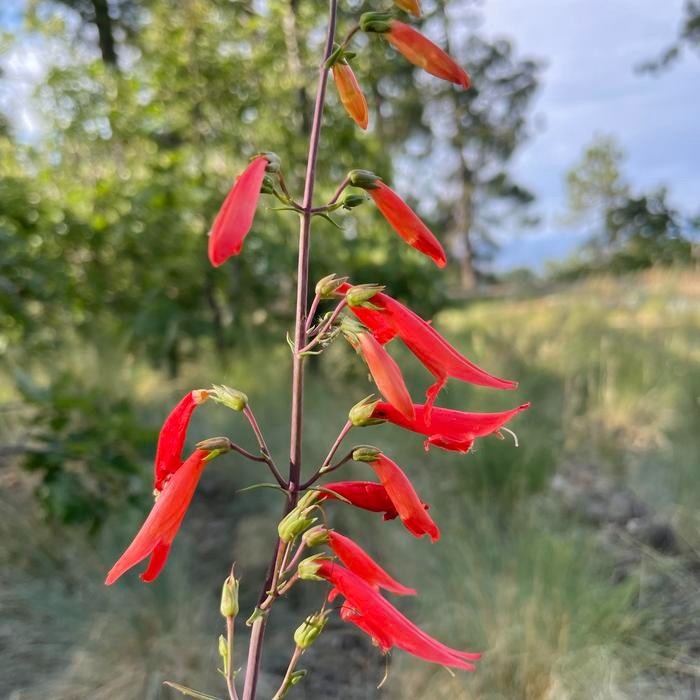Recent research led by Carolyn Wessinger at the University of South Carolina, USA, and colleagues discovered that substantial variations in flower traits among wildflowers, driven by different pollinators, can be attributed to a select set of crucial genetic distinctions. These findings were published in the open-access journal PLOS Biology on September 28th, 2023.
 Penstemon barbatus flowering in the Apache-Sitgreaves National Forest, Arizona. Image Credit: C. Wessinger
Penstemon barbatus flowering in the Apache-Sitgreaves National Forest, Arizona. Image Credit: C. Wessinger
Plants that depend on animal pollinators, whether insects or birds, have developed unique combinations of flower traits known as "pollination syndromes" that are finely tuned to suit their respective pollinators. An illustrative example is seen in the Penstemon genus, where the majority of species feature wide, blue flowers designed to serve as a convenient landing platform for bees.
However, certain species within this genus have undergone an evolutionary shift, developing narrow, tube-like red flowers that are specifically adapted to attract and facilitate pollination by hummingbirds.
To comprehend the genetic mechanisms underpinning the preservation of these pollination syndromes, scientists conducted DNA sequencing of 229 plant specimens from three closely related Penstemon species. Among these species, two were specialized for pollination by bees (P. neomexicanus and P. virgatus), while the third had evolved to rely on hummingbird pollination (P. barbatus).
Surprisingly, they identified relatively few genetic distinctions setting P. barbatus apart from its bee-pollinated counterparts, despite significant disparities in flower traits. In essence, plants originating from the same geographic region displayed greater genetic similarity compared to individuals from more distant locations, irrespective of their species. This observation suggests the occurrence of genetic interchange between wildflowers adapted for bee and hummingbird pollination.
Nonetheless, they pinpointed 21 specific locations that consistently exhibited variations among species with distinct pollinators. These sites are dispersed throughout the genome, increasing the likelihood of recombination—the process wherein maternal and paternal genes are mixed during gamete formation.
This recombination can potentially disrupt the cohesive set of flower traits, potentially leading to less viable hybrids. Notably, three of these genetic distinctions are in close proximity to genomic regions associated with flower color, width, and nectar volume—traits that distinctly characterize different pollination syndromes.
According to the authors, infrequent instances of hybridization occurring between closely situated Penstemon species adapted for bee and hummingbird pollination, along with robust selection pressures favoring the preservation of specific flower traits tailored to each respective pollinator, may offer an explanation for the observed outcomes.
Although bee- vs. hummingbird-pollinated species are easily distinguished in the field, based on unmistakable differences in flowers and the overall stature of the plant, a surprisingly small number of genetic regions distinguish these different species at the genetic level.”
Carolyn Wessinger, University of South Carolina
Source:
Journal reference:
Wessinger, C. A., et al. (2023) A few essential genetic loci distinguish Penstemon species with flowers adapted to pollination by bees or hummingbirds. PLoS Biology. doi.org/10.1371/journal.pbio.3002294.